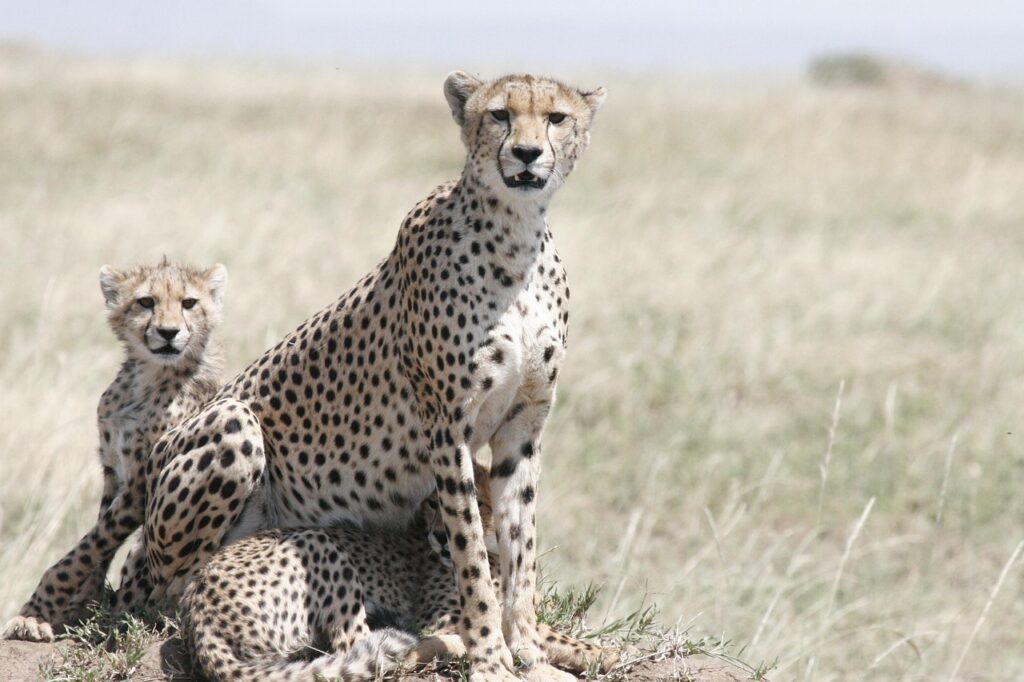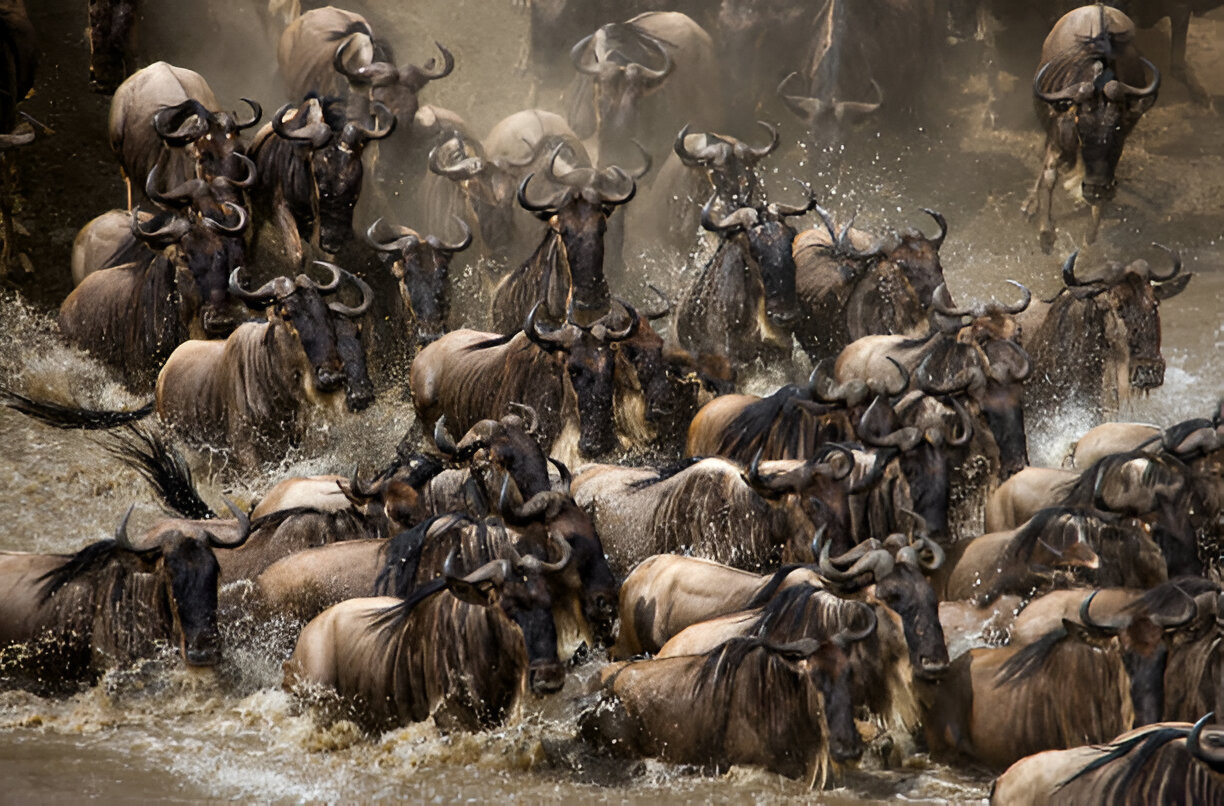
- Tanzania - East Africa
How Long Should a Safari Last? Planning the Perfect African Wildlife Experience
One of the most common questions for first-time travelers is: How long should a safari last? Whether your dream is to see the great wildebeest migration, track lions in the Serengeti, or enjoy a luxury lodge in the Okavango Delta, the duration of your safari can make a big difference in your overall experience.
In this comprehensive guide, we’ll explore the factors influencing safari length, typical itineraries, recommendations for different types of travelers, and tips for maximizing your wildlife adventure. By the end, you’ll know exactly how long a safari should last to create memories that last a lifetime.
Why Travelers Ask: How Long Should a Safari Last?
A safari is often a once-in-a-lifetime experience, and travelers want to optimize their time. Knowing how long a safari should last helps you:
Plan the right itinerary without rushing.
Balance wildlife viewing with rest and other activities.
Maximize your chances of seeing a variety of animals.
Fit the safari into your overall travel schedule.
While there’s no one-size-fits-all answer, understanding typical safari durations and what they offer can guide your planning.
Factors That Influence Safari Duration
Several factors determine how long a safari should last:
Destination:
Northern circuit (Serengeti, Ngorongoro, Tarangire) in Tanzania may require 3–7 days.
Southern Africa (Kruger, Okavango Delta) may allow shorter 2–4 day safaris.
Wildlife Interests:
First-time visitors may want more days to see iconic animals.
Season and migration patterns affect animal visibility.
Travel Style:
Luxury travelers may prefer shorter, high-comfort safaris.
Adventure travelers may enjoy extended itineraries with multiple parks.
Budget:
Longer safaris increase costs, including accommodations, park fees, and guides.
Other Activities:
Some travelers combine safaris with beach holidays, climbing Kilimanjaro, or cultural tours, which affects total trip length.
Typical Safari Durations
1. Short Safaris (2–3 Days)
Ideal for travelers with limited time or combining other activities.
Highlights:
Game drives in one or two parks.
Quick wildlife spotting, often in Tarangire, Lake Manyara, or Kruger.
Advantages:
Fits into a weekend or short trip.
Less expensive than longer safaris.
Limitations:
Limited time to see a wide variety of wildlife.
Less opportunity for relaxation between drives.
2. Medium-Length Safaris (4–6 Days)
This is the most popular option for first-time visitors.
Highlights:
Explore multiple parks or regions.
Greater chance to see diverse species and landscapes.
Includes cultural experiences and optional short excursions.
Advantages:
Balanced itinerary with wildlife, adventure, and relaxation.
Ideal for photographing wildlife and experiencing natural rhythms of the savannah.
Typical Example:
2 days in Tarangire, 2 days in Serengeti, 1 day at Ngorongoro Crater.
3. Long Safaris (7–14 Days or More)
Best for wildlife enthusiasts, photographers, or travelers seeking immersive experiences.
Highlights:
Multiple parks and ecosystems.
Possibility to witness the great migration in Tanzania or Kenya.
Combines walking safaris, boat safaris, and cultural visits.
Advantages:
Relaxed pace, maximizing wildlife sightings.
Opportunity for luxury lodges and varied activities.
Limitations:
Higher cost and requires more vacation days.
Chat with our expert direct via email!
Factors to Consider When Planning Safari Length
1. Season and Wildlife Patterns
Great Migration: For Tanzania and Kenya, 5–7 days may be optimal to catch river crossings.
Dry Season: Wildlife concentrates around waterholes, allowing shorter safaris to see big game.
Wet Season: Lush landscapes and fewer tourists may require longer stays to spot wildlife.
2. Age and Fitness Level
Families with young children may prefer shorter safaris with frequent breaks.
Older travelers may want fewer, more leisurely days in a single park.
3. Travel Logistics
Distance between parks, flight availability, and internal transfers affect ideal safari length.
Combining multiple parks or countries may require 7–10 days or more.
Tips for Maximizing Your Safari Experience
Plan Early: Book lodges, vehicles, and guides in advance to avoid last-minute stress.
Choose the Right Parks: Research which parks offer the wildlife and landscapes you most want to see.
Combine Safari Types: Consider mixing game drives with walking, boat, or balloon safaris.
Include Rest Days: Avoid packing the schedule too tightly; downtime helps you enjoy each experience.
Consider Private vs. Group Safaris: Private safaris offer more flexibility, while group safaris can save costs.
Sample Safari Itineraries Based on Duration
3-Day Safari (Short Trip)
Day 1: Arusha to Tarangire National Park – afternoon game drive.
Day 2: Serengeti National Park – full-day game drive.
Day 3: Ngorongoro Crater – morning wildlife drive, afternoon departure.
5-Day Safari (Medium Trip)
Day 1: Arrival in Arusha, overnight stay.
Day 2: Tarangire National Park – morning and afternoon game drives.
Day 3: Ngorongoro Crater – full-day drive.
Day 4–5: Serengeti National Park – full-day game drives and optional hot-air balloon safari.
10-Day Safari (Extended Trip)
Days 1–2: Northern circuit parks (Tarangire, Lake Manyara).
Days 3–6: Serengeti National Park – multiple game drives, migration viewing.
Days 7–8: Ngorongoro Crater and conservation area walks.
Days 9–10: Optional beach holiday in Zanzibar or coastal relaxation.
Frequently Asked Questions (FAQs)
Q: How long should a safari last for first-timers?
A: 4–6 days is ideal for first-time visitors to see a variety of wildlife without feeling rushed.
Q: Can I see the big migration on a short safari?
A: Yes, but 5–7 days increases your chances, especially during river crossing periods.
Q: Is a 2-day safari worth it?
A: Yes, for travelers with limited time, though it may only cover one or two parks.
Q: Do longer safaris mean better wildlife sightings?
A: Generally, yes — longer stays increase your chances of seeing rare or elusive animals.
Q: Can children enjoy long safaris?
A: Yes, but shorter daily drives and family-friendly lodges are recommended for comfort.
Final Verdict: How Long Should a Safari Last?
The answer depends on your goals, schedule, and budget. Here’s a simple guideline:
2–3 Days: Quick wildlife introduction; best for travelers short on time.
4–6 Days: Ideal first-time safari; balances variety, wildlife sightings, and relaxation.
7–14+ Days: Immersive experience; perfect for wildlife enthusiasts, photographers, or those combining multiple activities.
Ultimately, planning the right length ensures your safari is memorable, comfortable, and full of the wildlife and scenery you came to see.
Whether it’s a short adventure or an extended exploration of Africa’s wild heart, knowing how long a safari should last is the key to an unforgettable journey.
📌 Build Your Tour Today!


Olduvai Tours Tan_Africa
We ensure that your journey is not just a trip but a meaningful exploration of Tanzania’s natural and cultural treasures. Let us turn your dream safari into reality!
Booking your Adventure with Olduvai Tours Tan Africa
Olduvai Tours Tan Africa specializes in creating unforgettable Tanzania safari experiences, offering expert guides, personalized itineraries, and high-quality service.
Other Tours You May book with Olduvai Tours Tan_Africa:
Tanzania – East Africa Is It Possible to Do a Day Trip to a Park from Arusha? Arusha is…
Book 4 Days Tanzania Luxury Safari Itinerary Book Your 4 Days Luxury Safari Package! Tour Package Details 📍 Tarangire…
Affordable Group Joining Safari in Tanzania 2025 – Budget-Friendly 📍 Serengeti National Park, Ngorongoro Crater and Tarangire National Park…

